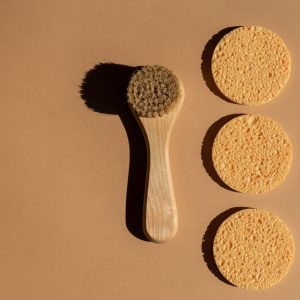Taking care of your skin is vital for improving and maintaining your appearance and health. Cleansing, moisturizing, and exfoliating are three essential treatments that should be done regularly to rejuvenate and oxygenate cells for smooth skin.
Beauty tools and products are constantly evolving, and unique tools are coming to the surface. One such beauty tool is an exfoliating facial sponge. Exfoliating sponges are known for cleansing and bringing the lost glow to the face.
Furthermore, Exfoliating sponges for the face are often smaller and less abrasive than sponges for the body. Natural and synthetic materials, as well as a variety of forms, are available. Many sponges are round, but they also come in square, rectangular, and teardrop shapes. The form is entirely subjective and has no bearing on the exfoliating sponge’s function.
Both synthetic and natural materials make body and face exfoliating sponges. Plant cellulose, such as that found in marine sponges, is a natural substance, and plastics are often used to make synthetic sponges. There is a significant textural difference between the two varieties, and both varieties have different degrees of roughness and feel different against the skin.
What does a facial exfoliating sponge do?
A facial exfoliating sponge exfoliates dead skin layers gently to remove dullness and unclog pores, removing toxins and impurities to expose the skin’s natural radiance. The sponge also massages the skin and encourages blood circulation throughout the body, making it essential to any cleansing process. The face exfoliating sponge is the key to better health and hygiene since it is designed to generate a thick lather even with a tiny amount of soap.
Tips for using an exfoliating sponge
- Soak your sponge
Some exfoliating face sponges are packaged in a wet bag, similar to how kitchen sponges are packaged. Others will have completely dried out. Although the moist package may appear damp and strange, it is positive since it indicates that your exfoliating sponge is ready to use right away. If your sponge is dry, soak it for at least 10 minutes to properly wet it, then ring it out thoroughly before using.
- Use it in a circular motion
Using an exfoliating face sponge in a circular motion will slough away the dry and dead skin cells without irritation. Stick to utilize it 2 to 3 times per week instead of every morning and night to avoid over-exfoliation. Use your normal cleaner or, of course, as a tool for removing soap with warm water.
- Rinse and squeeze
Many beauty experts recommend washing and squeezing the sponge when you are done using it. The wet, dirty sponges are the home to bacteria and germs which contaminate the sponge, and the sponge needs to be air or sun-dried for subsequent use.
- Hang it in a dry place
Instead of keeping your sponge in the shower, keep it somewhere cold and dry. This may imply not hanging it at all in the restroom for some. It will naturally start to break down because it is a fibrous root. Moreover, replace it every 4 to 6 weeks, depending on how often you use it. Once a week, sterilize it by immersing it in hot water for a few minutes.
- Buy the sponges in bulk
Most exfoliating sponges are created without preservatives, beneficial for your skin. The sponge will need to be replaced after 2-3 weeks because there is nothing in the sponge to prevent germs from forming. Natural exfoliating sponges are environmentally friendly. When you’re done using them, the sponges are entirely biodegradable and may even be placed in your compost.
Risks of using a facial exfoliating sponge
Facila exfoliating sponges are popular because they exfoliate the skin. Dead skin cells can cluster together on the top layer of your skin, giving it a dreary, older appearance. Sponges gently remove this layer without damaging the new, healthy skin cells underneath.
This benefit may come with some unintended consequences. Even after hanging your sponge to dry in the shower, it accumulates moisture or steam residue from your time there. Dead skin cells in a damp environment are a breeding ground for harmful microorganisms. Although exfoliating facial sponges haven’t been proved to grow most staph or strep germs, they can serve as a habitat for other pathogens on your body, such as E. coli.
This won’t be an issue for someone who cleans the exfoliating sponges regularly and appropriately – however, most people don’t. Some skin types may find sponges overly rough. Your skin may be particularly susceptible to exfoliation if you’ve ever experienced discomfort after using an exfoliating sponge. Sponge harsh and brittle fibers can be too much for certain people, causing skin injury over time.



